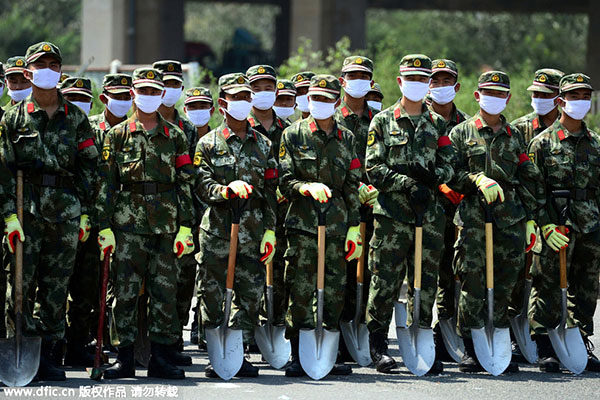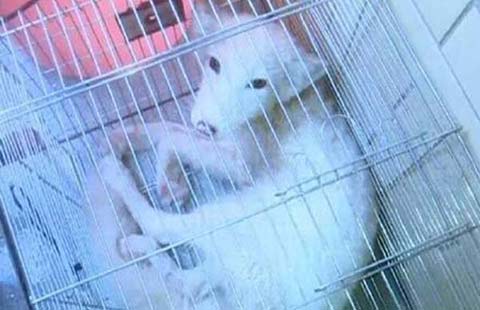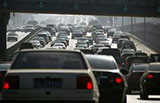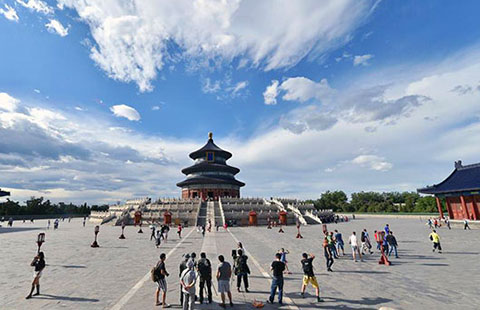Death toll at 112 from Tianjin blasts, sodium cyanide located
(chinadaily.com.cn/Xinhua) Updated: 2015-08-16 07:01
 |
|
Armed police arrive at the site of a blasting warehouse for search and rescue efforts, Aug 13, 2015. [Photo/IC] |
Authorities have closed three sewage outlets to the sea and also used cement to block all drain outlets at the blast site to avoid pollution of waters outside the site, Wen said.
Other measures include the construction of cofferdams to prevent leaked chemicals from polluting farther when it rains, using hydrogen peroxide to reduce the amount of cyanide, and collection of sewage water at the blast site for special treatment.
Sodium cyanide, though highly toxic, is not volatile in normal conditions and only emit hydrogen cyanide into the air when meeting water, Wen said, adding dozens of stations are closely monitoring the quality of air and water.
Meanwhile, Minister of Public Security Guo Shengkun said saving lives will remain the top priority even beyond the 72-hour golden period for rescue.
He urged rescuers not to give up on hopes, while leaving no single corner unchecked during the search and rescue mission.
Guo also urged a scrupulous plan to handle and clean up hazardous chemicals in a scientific way, so as to absolutely prevent any impacts on rescuers and nearby residents.
Chinese President Xi Jinping on Saturday urged authorities to learn from the "extremely profound" lessons paid for with blood.
Xi said in a written instruction that the Tianjin blasts and a string of serious accidents recently exposed severe problems in the work safety sector, and authorities must always keep "safe growth" and "people's interest first" in mind to avoid such accidents.
Premier Li Keqiang urged authorities to take forceful and effective measures to rectify the weak link so as to formulate a long-term mechanism to avoid the repetition of accidents.
The State Council on Saturday called a national tele-conference to lay out work on a national safety inspection that will target industries related with dangerous chemicals, explosives, fireworks, elevators, non-coal mines, public transport and ports.
- Delegation salutes Tibet anniversary
- Officials are told to act as anti-graft watchdogs
- Great Wall safeguarded in united action
- Vice minister pledges more efforts to improve air quality
- Beijing’s efforts to control air pollution start to pay off
- China's military committed to reform
- Netizens rip singer over baby photos
- Central govt's growing support for Tibet
- Monument to be built on Tianjin blast site
- China and Russia seal raft of energy deals







